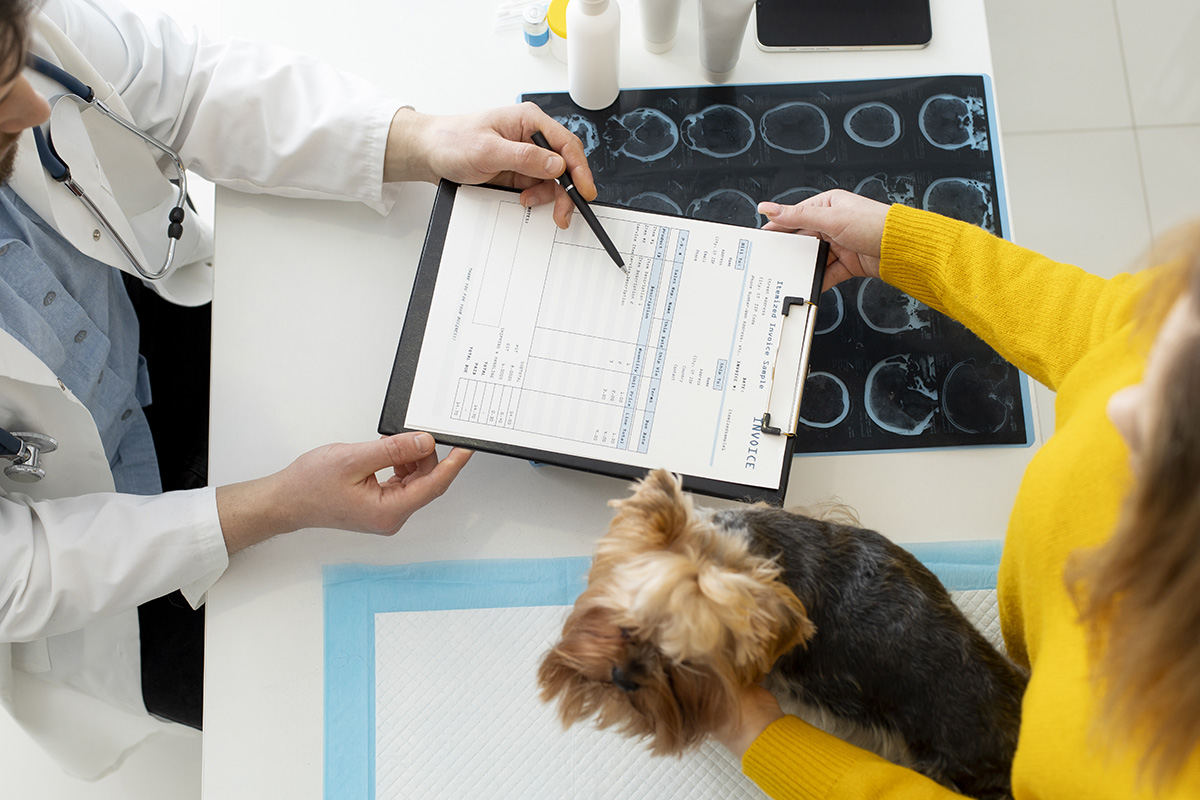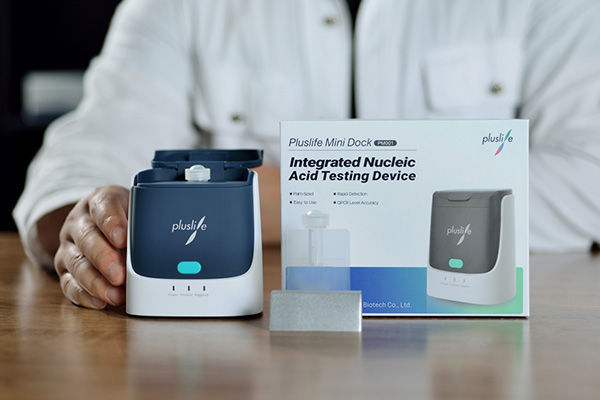PCR Tests for Dogs: A Comprehensive Guide for Veterinarians Leave a comment
Veterinary diagnostics has transformed over the years with the advent of advanced testing technologies. Among these, Polymerase Chain Reaction (PCR) tests stand out for their capability to detect infectious diseases accurately and rapidly.
This article provides an in-depth look at PCR tests specifically for canine diagnostics, focusing on common applications, advantages over traditional methods, best practices in sample collection, and recent advancements in PCR technology.
Common Viral and Bacterial Diseases Diagnosed with PCR Tests
PCR tests play a crucial role in identifying a variety of viral and bacterial diseases affecting dogs. Some of the most common conditions diagnosed through this technology include:
1. Canine Distemper Virus (CDV)
Canine Distemper is a severe viral infection that affects multiple systems in dogs, including the respiratory and nervous systems. PCR tests can confirm the presence of CDV, allowing for prompt treatment.
2. Canine Parvovirus (CPV)
This highly contagious virus primarily targets puppies and can cause critical gastrointestinal issues. PCR diagnostics provide rapid identification, essential for managing this disease effectively.
3. Canine Herpesvirus (CHV)
CHV is particularly dangerous for newborn puppies, leading to fading puppy syndrome. Early detection through PCR can significantly improve survival rates.
4. Canine Adenovirus Type 2 (CAV-2)
CAV-2 is associated with respiratory illness. PCR can confirm infections, aiding veterinarians in implementing appropriate treatments.
5. Bordetella bronchiseptica
This bacterial pathogen is a contributing factor in kennel cough. Utilizing PCR allows for accurate diagnosis, critical in preventing outbreaks in kennel settings.
6. Leptospira spp.
Leptospirosis can result in serious organ damage in dogs. PCR aids in identifying the bacterium, enabling early management of affected animals.
7. Brucella canis
This organism causes reproductive issues in dogs. Through PCR testing, veterinarians can diagnose and address infections effectively.
By employing various PCR panels designed for detecting these pathogens, veterinarians can quickly and accurately diagnose conditions, facilitating timely intervention and treatment.
Advantages of PCR Tests Over Traditional Diagnostic Methods
Utilizing PCR tests in veterinary medicine offers several benefits that significantly enhance diagnostic capabilities:
Speed and Efficiency
PCR tests yield results in hours, which is a marked improvement compared to traditional culture methods that can take days to weeks. For example, a study indicates that PCR can diagnose specific mastitis-causing pathogens in roughly 2.5 to 3 hours, whereas cultures might take up to 10 days.
Sensitivity and Specificity
The precision of PCR tests allows for the detection of minute amounts of pathogen DNA. This means infections can be identified even before clinical symptoms appear, thus enabling more effective disease management.
Versatility in Sample Types
Various sample types such as blood, feces, and nasal swabs can be used with PCR. This adaptability is beneficial, particularly when dealing with treated animals where viable organisms may not be available for culture.
Reduced False Negatives
Unlike traditional methods, which can yield false negatives, PCR tests improve diagnostic accuracy. This characteristic is especially vital in detecting difficult-to-culture pathogens, significantly enhancing overall veterinary care.
Multiplexing Capability
PCR testing can simultaneously detect multiple pathogens from a single sample, improving diagnostic efficiency. This capability leads to comprehensive results that help veterinarians in treatment planning.
These advantages establish PCR technology as a pivotal aspect of veterinary diagnostics, enhancing disease management and biosecurity across canine populations.
Sample Collection Protocol for PCR Tests
The effectiveness of PCR testing hinges on the proper collection and handling of samples. The protocol varies depending on the illness being tested:
For Enteric Illness (e.g., Canine Coronavirus PCR)
- Preferred Samples: Feces, swabs (at room temperature), and intestinal tissues.
For Respiratory Illness
- Preferred Samples: Nasal swabs (at room temperature) and lung tissues.
Sample Handling
It’s critical to avoid contamination during sample collection. Swabs should be handled with care using appropriate transport media, and samples should be shipped promptly, ideally frozen on dry ice or refrigerated, to maintain their integrity.
According to guidelines from the Animal Health Diagnostic Center, “Samples need to be collected carefully to avoid contamination” (Animal Health Diagnostic Center).
Current Best Practices for PCR Testing in Dogs
Implementing best practices is essential for veterinarians to maximize the effectiveness of PCR testing:
1. Sample Selection
Choosing the right sample type is crucial. For example, rectal swabs, blood, and pharyngeal swabs have proven effective for diagnosing canine parvovirus while ensuring that the selected samples yield the most accurate results.
2. Test Validation
Validating PCR assays is fundamental to ensuring their reliability. Implementing quality assurance procedures to monitor for inhibition and ensure clear differentiation between vaccine interference and natural infections is vital for accurate diagnoses.
3. Interpretation of Results
Interpreting results should be done in conjunction with clinical signs and other diagnostic tests. In instances of vector-borne diseases, additional serological tests may be necessary to confirm findings, particularly to navigate complexities such as the “sample-volume paradox” in PCR assays.
4. Confirmation of Positive Results
In cases of presumptive positive PCR results—especially for pathogens like SARS-CoV-2—confirmation through further testing at accredited labs is critical for ensuring diagnosis accuracy.
5. Ongoing Education and Protocol Development
Continuous education on the latest PCR testing protocols ensures that veterinary professionals are equipped with current knowledge for effective diagnosis and management to support optimal animal health.
Recent Advancements in PCR Technology
Recent developments in PCR technology have further enhanced its applicability in veterinary diagnostics. Innovations such as isothermal nucleic acid amplification technologies, including loop-mediated isothermal amplification (LAMP) and insulated isothermal polymerase chain reaction (iiPCR), allow for rapid results within an hour. These new methods are designed for field use, removing the need for expensive equipment while improving accessibility and efficiency.
A review reflects this, stating, “Isothermal nucleic acid amplification technologies… have been developed to be utilized in-field, and provide rapid results within an hour” (Knox et al., 2021).
Moreover, advancements in real-time PCR techniques ensure consistent performance, which is essential for reliable results. As noted by Toohey-Kurth et al. (2020), the American Association of Veterinary Laboratory Diagnosticians emphasizes robust best practices for assay performance.
Introducing Pluslife PCR Testing Technology
Cost Plus Medical Technologies introduces the Pluslife PCR testing device as a cutting-edge solution for veterinary diagnostics. This small, lightweight device combines convenience and accuracy, providing performance comparable to conventional PCR.
Key Features of Pluslife Mini Dock:
- Rapid Results: Concludes test results significantly earlier than antigen tests, enhancing disease management timelines.
- Comprehensive Applications: Expandable for multi-variant detection, increasing its diagnostic utility.
- Robust Sensitivity and Specificity: Clinical studies indicate a sensitivity of 98.91% and specificity of 99.58%, presenting an effective tool for rapid and accurate diagnostics.
Comparative Performance
The Pluslife Mini Dock’s performance data clearly illustrates its capability compared to traditional testing methods. The analysis showcases the device’s consistency in detecting low copies of viral RNA, necessary for timely identification and management of infections.
| Testing Method | Manufacturer | Performance |
|---|---|---|
| Nucleic Acid Test | Pluslife | Detects samples with Ct-value reached 44.8 |
| Antigen Test | Multiple Manufacturers | Significant failures in detecting samples with Ct >30 |
Operating Procedures
The Pluslife device streamlines the testing process with straightforward procedures, encompassing:
- Sampling
- Pouring
- Mixing
- Testing
- Result Recording
These features make the Pluslife PCR testing technology an invaluable asset for veterinarians, contributing to better diagnostic outcomes for canine health.
Conclusion
In summary, understanding PCR tests is vital for veterinarians aiming to improve diagnostic accuracy in dogs. By recognizing the common diseases detected, advantages over traditional methods, and adhering to best practices for sample collection and result interpretation, veterinarians can better manage infectious diseases in canine populations. Moreover, the introduction of innovative technologies like the Pluslife Mini Dock enhances accessibility and efficiency in veterinary diagnostics, ultimately leading to improved health outcomes for dogs and their owners.
Embracing these advancements and maintaining a commitment to ongoing education will continue to evolve the landscape of veterinary medicine, ensuring the best outcomes for our four-legged companions.



